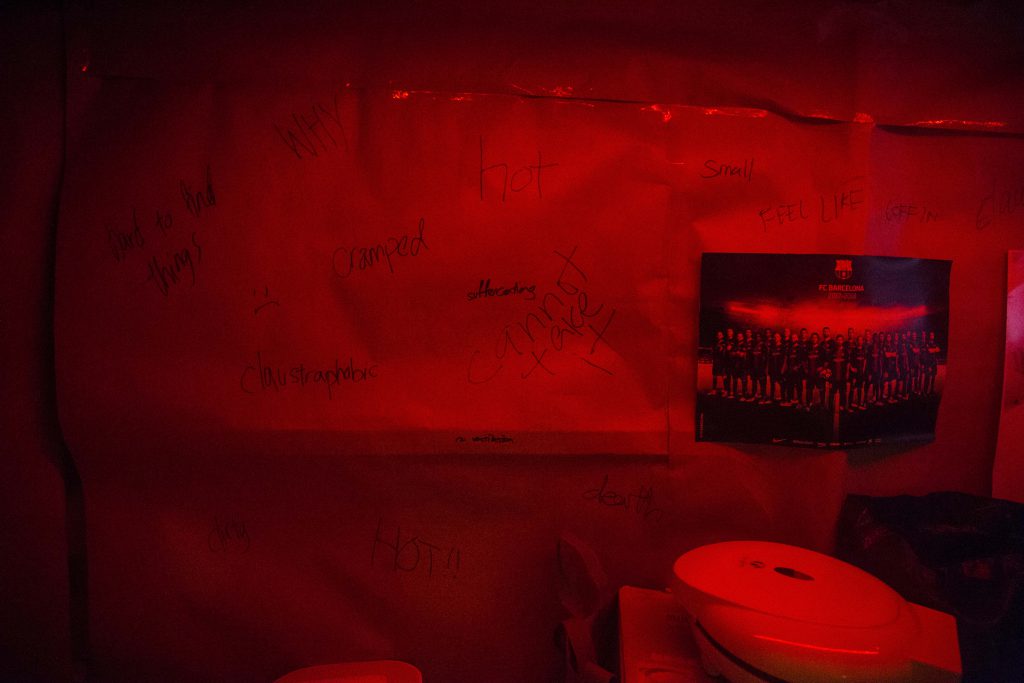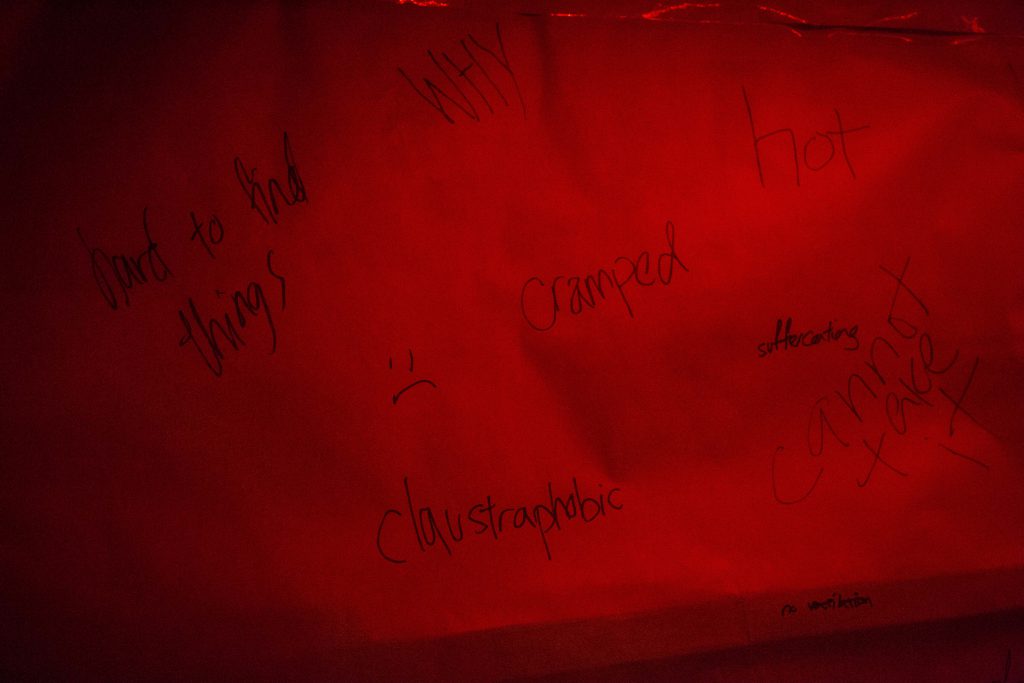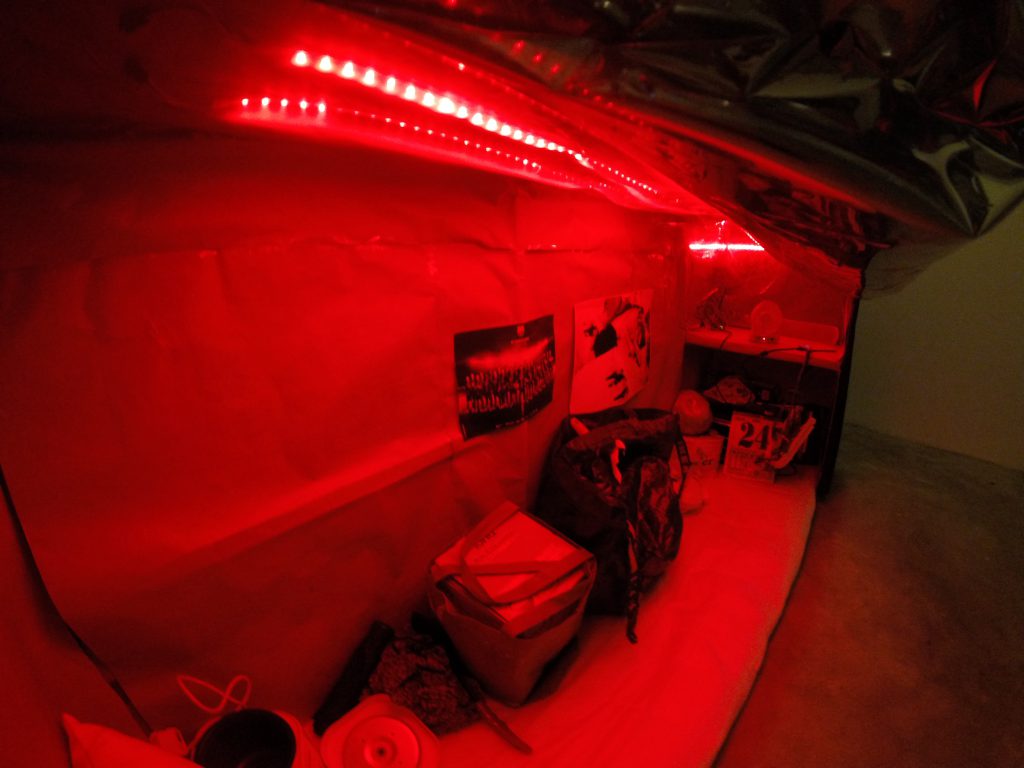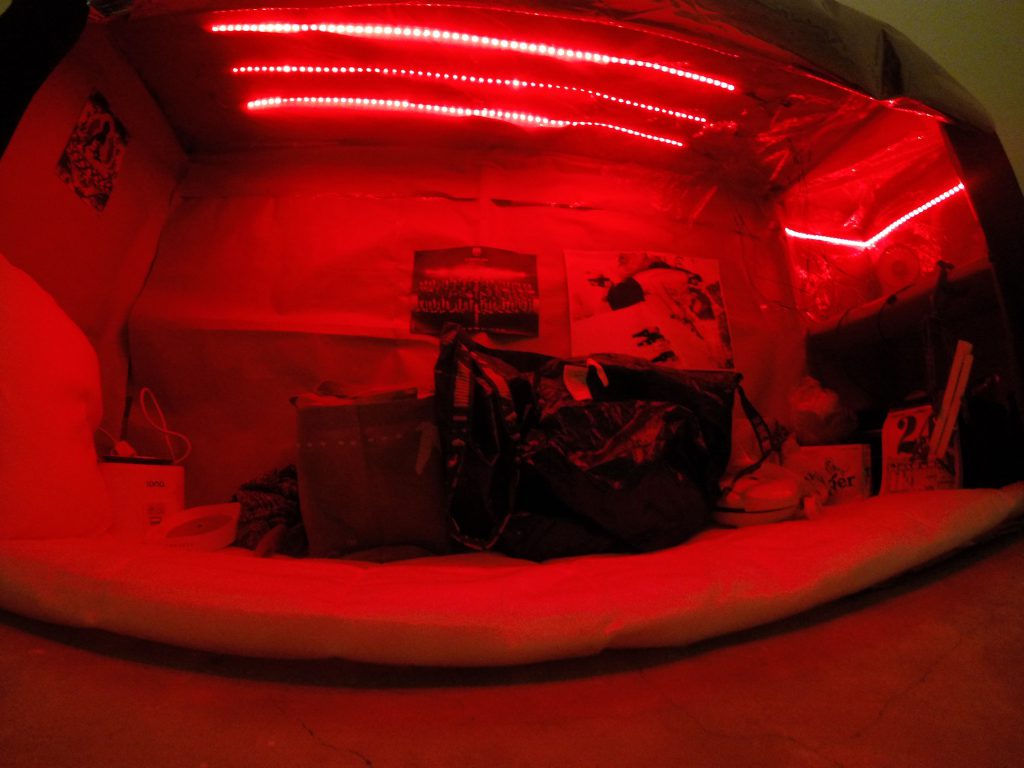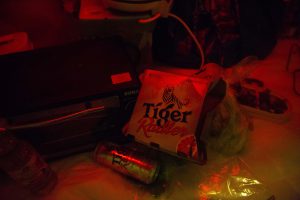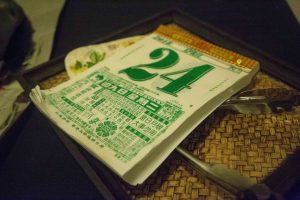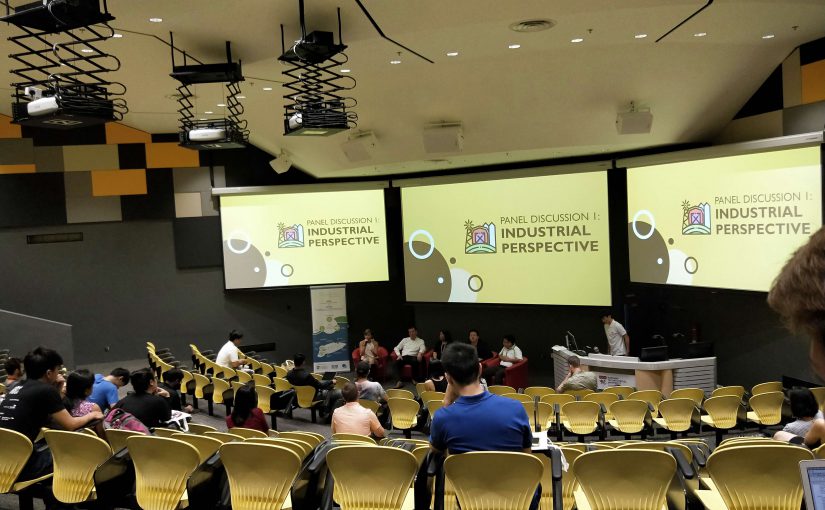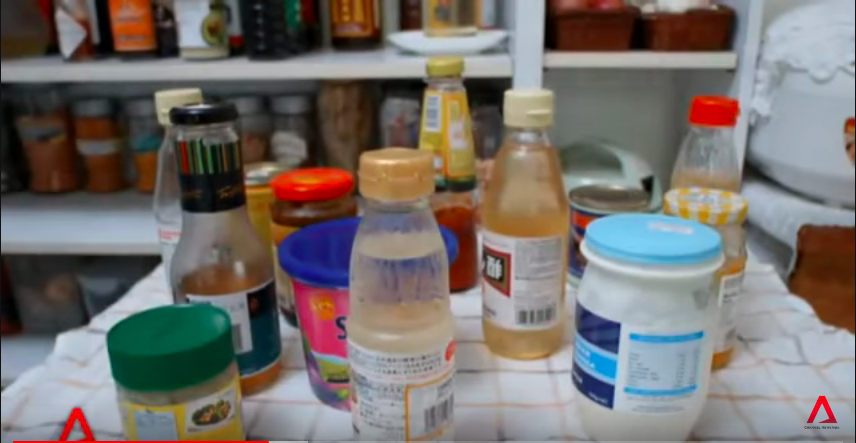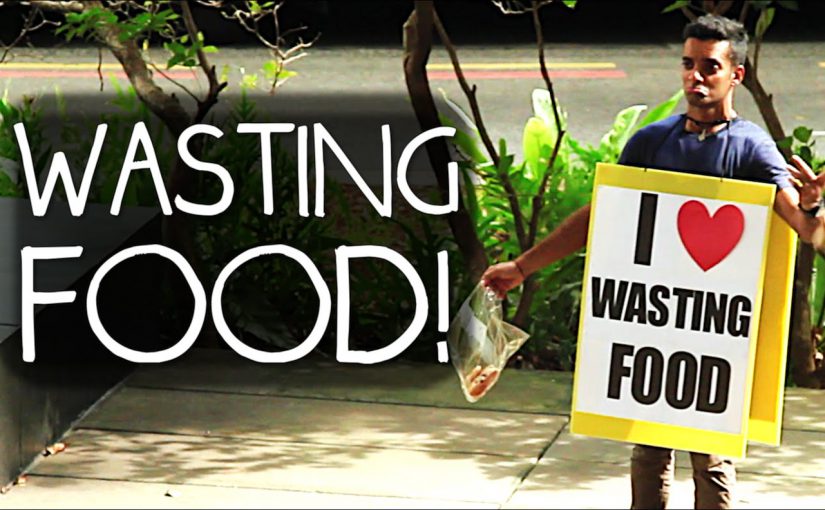Presentation link here
Month: April 2018
Interactive Spaces: Too Small To Swing a Cat [Final]
Hi good people of OSS.
We’d like to express one thing we’ve missed out during the presentation – written thoughts of participants! We actually found scribbles on the wall after some participants found a marker in the coffin house.
And some others actually followed suit, penning down their thoughts on the walls.
Words such as sad, claustrophobic, cramped and coffin were commonly mentioned with the participants.
The actual coffin boxes of Hong Kong
Here are some images of the real coffin box houses in Hong Kong, in its purest and rawest form.
Does looking at this already make you feel claustrophobic?
Claustrophobia ˌklɔːstrəˈfəʊbɪə: extreme or irrational fear of confined spaces.
For this module of interactive spaces, we really wanted to explore the idea of how one can feel so choked and suffocated through a space itself. Hence we created an installation experience
Having recalled that I chanced upon these coffin houses photos previously, I decided to create this environment along with an experience. 9 out of 10 participants mentioned ‘claustrophobic’ during the installation
The Final Installation

The red LEDs in the space is a metaphor that signifies the will for survival in these coffin homes.
Items in the house
These ‘coffin homes’ are no bigger than 15 square feet. Household items such as food, beer cans, fan, screen, hanging pecs, mattress, pillows were noted in the actual environment. Hence we sourced and purchased these items to simulate the space as much as possible.
We included tiger beer cans and a Chinese calendar to simulate a more typical Asian household field.
Other items we transported over were rice cookers, waffle makers, knife, oil and other kitchen apparatus.


And finally….the final documentation video.
We managed to get students from other majors to try this out. Watch their interactions and reactions to find out how things went!
Video playing on screen
Below is the video that played as the pressure sensor detects a person’s weight.
Wrapping things up…
Ideally, we would place this ‘coffin box project’ in housing estates be it in Hong Kong or Singapore, in the middle of nowhere on of lane, street or void deck to pique curiosity. By revealing a simulated space and environment, we hope to tell stories and spark conversations on the issue through this interactive project. Interactive Spaces as a whole really pushed some critical thinking of spaces in general. Whenever i’m out or at home, I’d start to realise the different ways we interact because of the space – high or low roof, confined or twisted corner. Amazing how some shifts in these conventions change how we see things as a whole.
And oh HEY look what came into the news:
An article by Yahoo on 29th April 2018: With more shoebox units, is Singapore going the way of Hong Kong?
Indeed, it’s a real and relevant question to ask.
Project members: Lay Hsing Ern Valerie, Tan Siew Hua
FYP Ideation: Food waste part III
Research and more research:
Talks: Food Waste symposium at NTU
It was great timing that the school actually put together a symposium on food waste last Wednesday that invited social enterprises over for a 3-hour talk to give audiences insights as well as a panel discussion.
It was a public lecture where I found the attendees to be PHD students, bioscience students or groups of students that were interested to tackle Food Waste as an FYP topic.
I looked forward to Ms Nichol Ng’s talk who is a co-founder of Food Bank. She projected some fascinating insights and figures of food donations her organization deals with:
- Two full lorries of onion rings were donated to them because 2 customers complained they found onion skins in them. Therefore, they can’t be sold
- The Food Bank received snacks in huge amount because of minor packaging errors or because the product’s flavour was not selling too well.
- Supermarkets are able to return 90% of their items to the manufacturers. Therefore, its the manufacturers are the ones that are stuck with this food wastage
- Incineration is cheap in Singapore hence it is the easy way out. These incinerated food are perfectly edible but are being burnt because it is the easy way out – do not have to account for food waste
Also, during the Q&A session there was an angsty man that expressed his anger and kept questioning who were the ones that could change policies.
I found it rather funny as if the panel was able to answer that, there would not be food waste anymore.
Hence, it really got me to understand that for this issue to start improving, we have to start with ourselves.
Also I was glad that I managed to have a chat with the founder during the break and realize that the food Bank actually organized worked with artists and organized art competitions. Hence, this serves some possibility of collaborating with them for the FYP
More research!
Documentaries: Channel News Asia – IT Figures on Food Waste
After watching a CNA documentary on how households overbuy, I decided to check out my own stash on the dining table.
Here’s what I found
And indeed, these were all expired. I am feeling so guilty.
In just one container of items, there was already this amount of food waste, because of overbuying. Indeed the figure, 40% of food being produced is never eaten truly struck me.
Would you want to check out your kitchen right now?
Essentially, I would continue to think about what is the best way to get this figures presented to masses. Currently, it is to use its actual multitude to create a voice and show this ‘unseen’.
And on a leaving note, this issue of food waste is too infamous that even the number 1 top hit Shape of You has a parody version about food waste.
FYP ideation progress: Food for thought on food wastage
More research!
Further research on food waste has been rather eye opening on this recurrent issue, as there seem to be quite an effort curbing the issue in Singapore.
Just recently on 28 March 2018, there was a Singapore community food festival ‘Feeding the 5000’ that took place at City Square mall. It aims to raise awareness for the 791,000 tonnes of food that are annually going to waste in Singapore.
Apart from festivals as such, there are also social enterprises and other non-profit organisations such as Food Bank and Food from the Heart that collects donated food to be sent to the needy to name a few.

However, the issue of food waste and tackling it seems to have been looked upon in a serious and practical campaign sort of direction. This could a possibility that the issue is known, but not sparked enough to create an eye-opener or topic about it again. Could this be when art or installations come into useful play?
Ultimately, I want to create a channel that makes one realize that we ARE contributing to food waste and the immensity of its scale
Concept generation
1.Use food waste to fight food waste
So, how would you react if you saw this during an FYP show?

Shocked? Enraged?
Great! Now i got your attention.
2. Element of making it personal
What other way to do it but to make them go through food waste themselves?
Pledging against food waste. Selfie + scan item (team lab)
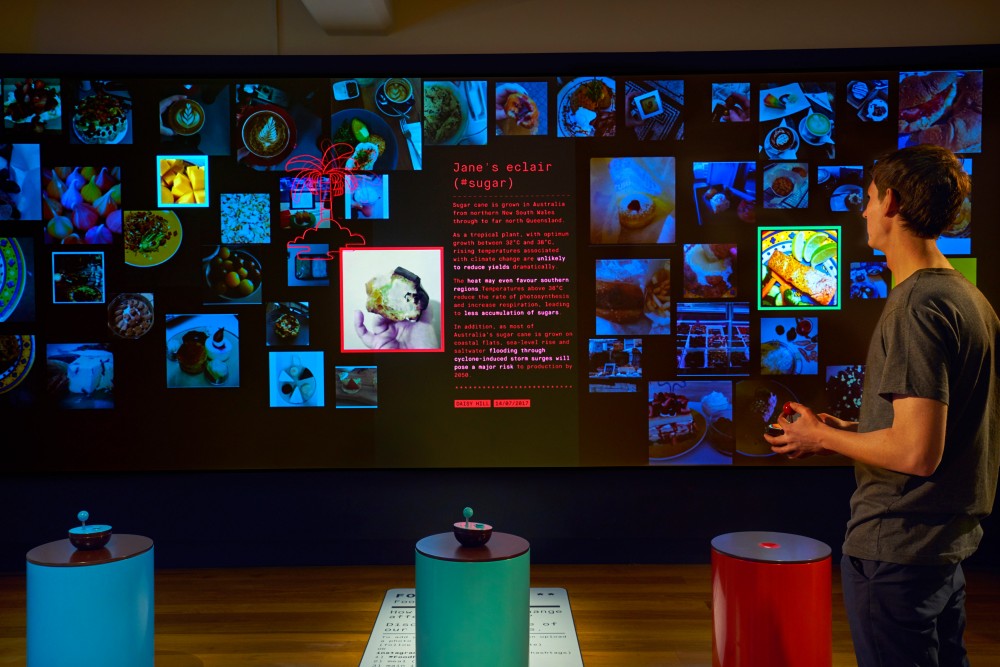
3. Immensity of scale
So there’s a food artist like that: Artist Inspiration
With even further research, I found some photos of this concept of food installation itself. Jennifer Rubell does it playfully well:
![]()


The conceptual form
To put things into perpective, I thought of using our weight as a gauge to the tonnes of food waste generated.
Food-human see-saw.
(refer to notebook)
FYP Ideation progress: Food Wastage
After some serious thought on the topics i’ve presented on previously, I decided to go with tackling the topics of Food Waste.
Give the topic a search and tons of articles start to appear from countries across the globe, indicating the seriousness of this social issue.
One might think of a food getting poured into the bin as their first thought of food waste. But they come in several forms namely
- Untouched by the consumer
- Not bought in the supermarket
- Destroyed in transport
- Inedible caused by bad cooking
Whatever the case, it is estimated that 1/3 of the food in the world goes to waste.
Also, 40% of the average household bin is made up of food.
A social experiment by American youtuber Joey Salads puts things into perspective, when he reveals the amount of food waste in a bin in 1 hour at just 1 eatery.
To put things into a local context, i’m glad I actually found this funny video of Singapore comedy channel Ministry of Funny.
Indeed why are people angry when he threw bread on the floor, when actually much more is happening this second?
So, why are only people noticing when one blatantly steps out on the streets of orchard road to throw some bread?
What I would like to achieve out of my project is to allow others to realise the immensity of food wastage happening every moment and perhaps include a shock factor that has an element of participatory or an experience.
In moving forward…
I will continue to keep a food journal of my own food wastage and observe the public in general to find mediums that will best bring the message across.
Keeping track of my food waste has made me more conscious on the food I purchase and partake in general. A good thing?
Emergent Visions: Mobile AR by Tamiko Thiel
Day 2 of symposium after lunch kicked off with a jolly note when Kristy announced that the tour would end at a the Smoke & Mirrors bar that day. I was really tickled that everyone kept mentioning about cocktails after that!
Tamiko, the speaker for the session started off by sharing popular examples of VR before sharing about her work in this area. She touched upon AR works that were commercial and also works of art
The use of Augmented Reality in today’s society – Art vs Commercial
AR in Commercial



July 2016 – 45 million users per day
Breakthrough for AR – everyone was playing it. Almost
Pokemon Go certainly served its role in interaction, allows users to come together as pokemon trainers instead of an individual player on the mobile phone
AR in Arts
An example of is ARt Critic Face by Tamiko Thiel. One of her playful works where she seems to be using AR in a satirical way – faces that seem to say ‘you call this art???????’ appear all around your mobile screen!
This is geolocative augmented reality installation that only shows up at certain locations, which are mostly museums, art festivals and popular spots.
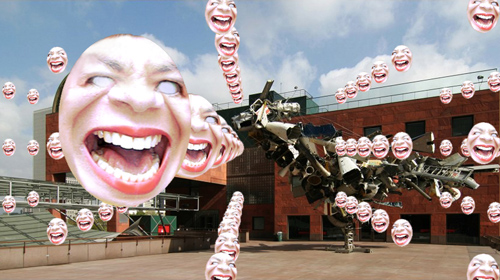
Los Angeles Museum of Contemporary Art (LA MoCA)
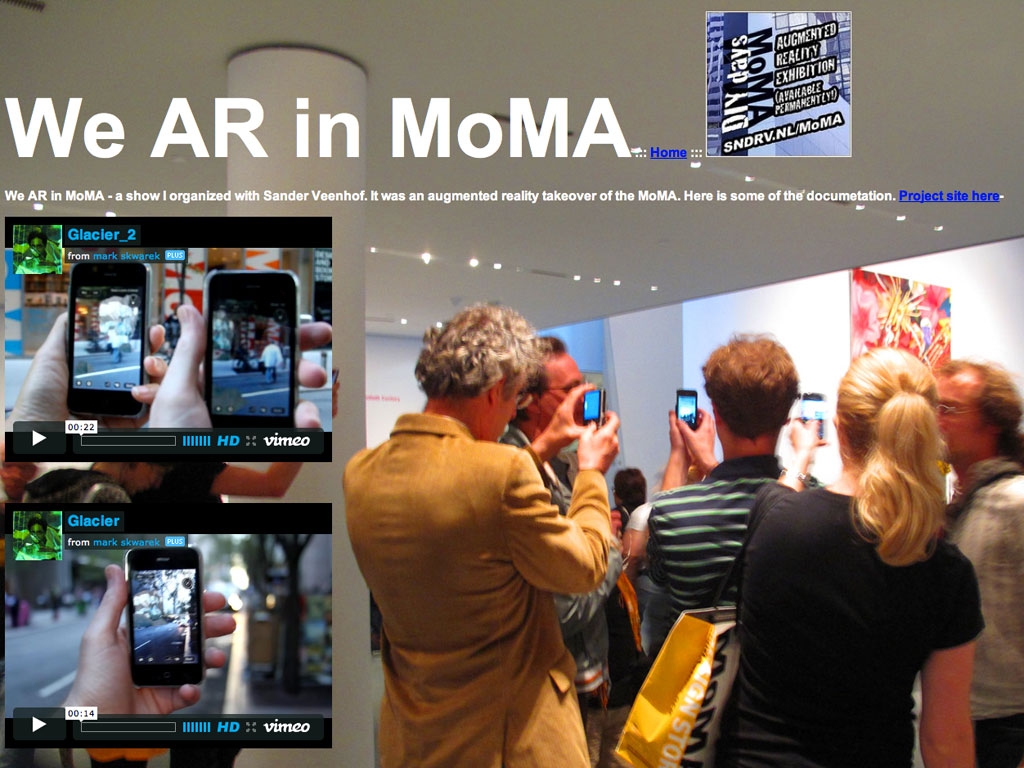
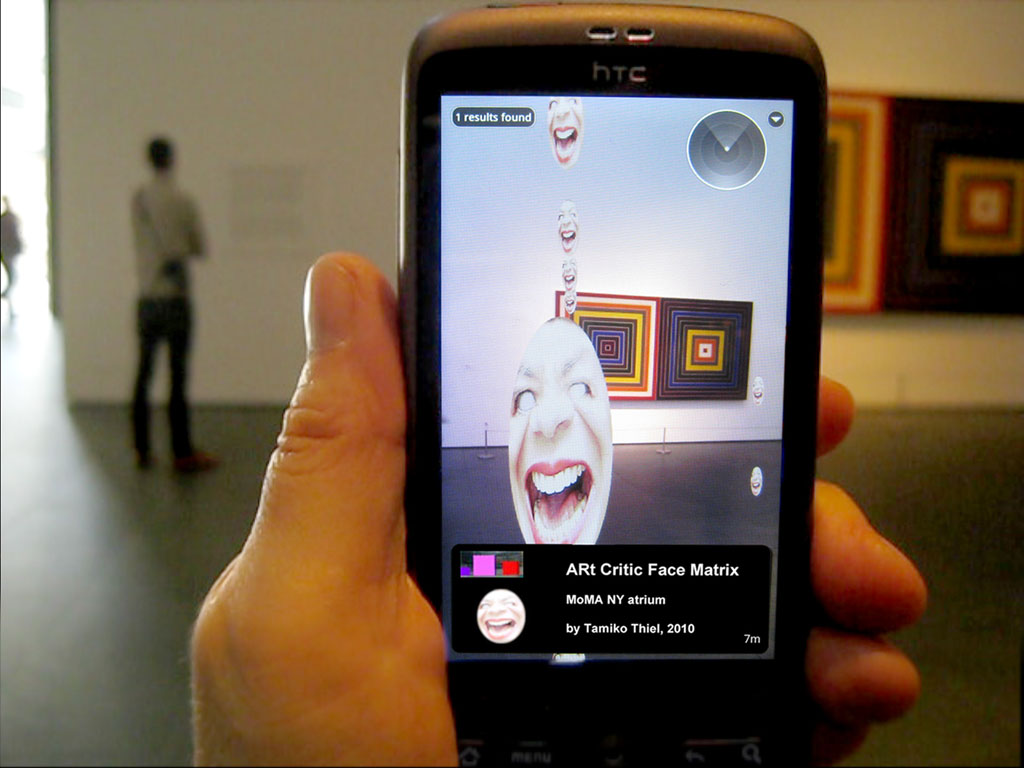
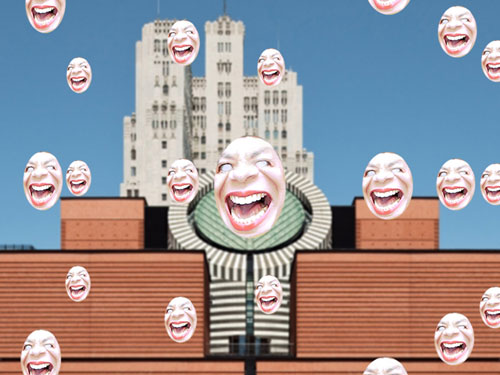
San Francisco Museum of Modern Art (SF MoMA)
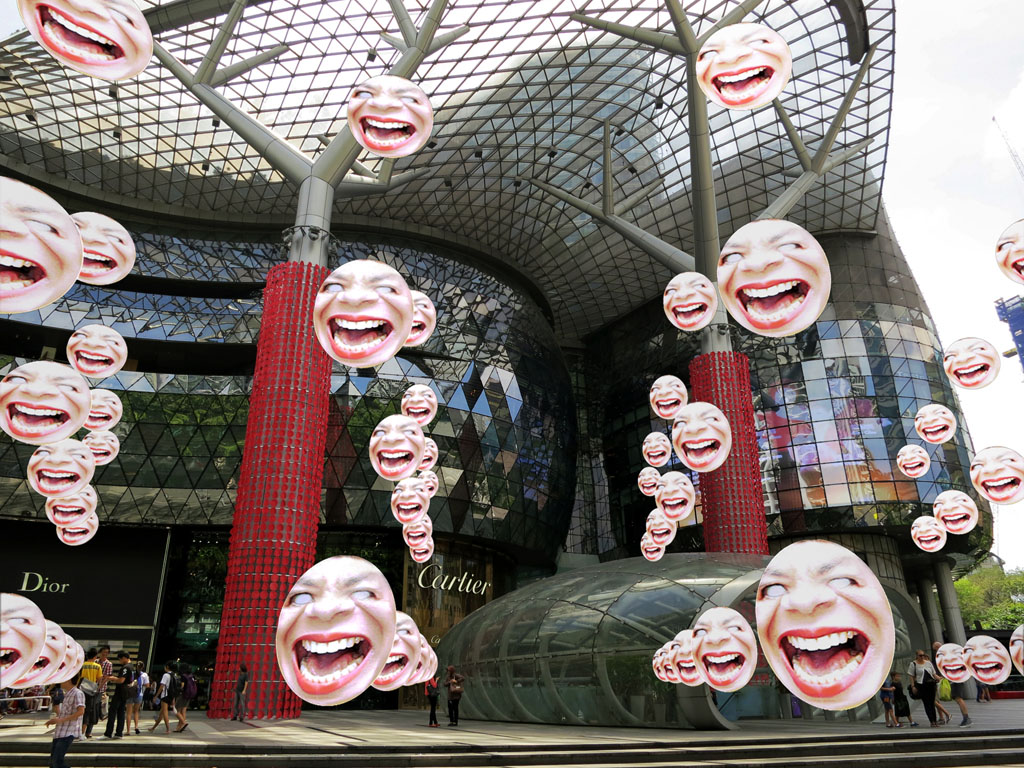
ARt critic faces at Orchard Road
I personally feel that this piece of artwork actually comes off as shocking, abit of a Damien Hirst. The artist seemed to be making use of a new medium of AR to create a shock factor. I mean, getting museum visitors bombarded with countless faces questioning what they see in the biggest museums are really art…..that is one bold move.
The question by the artist:
Will this bring recognition for AR as an artistic medium or commercial medium?
Val’s answer: Do we really need a concrete answer for this? Instead, I would think of it as “Is AR recognised as a useful medium? Be it in arts or commercially”
Examples of AR playing a useful role in arts and commercial scene

Arts: AR used to elevate the museum experience, at the Art Science Museum in Singapore
Commercially: AR aids people in visualization through environmental mapping

Ikea Mobile App using camera AR map to measure a sense of space
What I noticed in AR trends: VERY popular for VERY short period of time or VERY expensive effort and time VERY little recognition. So why not make good use of it when there’s much effort behind an AR work?
“El Barrio is home!” Augmented reality installation, 2016
The Caribbean Cultural Center and African Diaspora Institute is a cultural center for the world-wide African diaspora based in East Harlem (“Spanish Harlem”) in New York City.
Back in 2012 as AR artistic advisor I helped them get a Rockefeller Foundation Cultural Innovation Award for “Mi Querido Barrio,” a Street Art project to put their art, culture and history on the streets of El Barrio/East Harlem using augmented reality.
I held workshops in AR for CCCADI’s artists, and they invited me to create a work for the exhibit that would trigger off the facade of the new building itself.
For my piece we asked residents to answer the question, “What makes El Barrio feel like home to you?” I took their handwritten and signed answers and transformed them into golden words that swirl around you when you scan the facade.
- Importance on personal voice
During the talk, Tamiko Thiel had a heavy emphasis on using their handwriting as the subject matter. The handwriting evokes the sense of belonging and people can recognise their “voice” in the work.
Another interesting aspect was that AR is technically artificial so perhaps overlaying the “reality” artificially makes it sort of “mixed” reality? Tamiko Thiel also emphasis greatly on that in many of her works, she did not want to depict graphics in a realistic manner. However, in this work it was realistic yet not realistic. The written texts by the people can only be seen using the device hence, the golden words are technically not there in reality however the true personal voice are recorded virtually.
- Importance of AR to capture forgotten culture and bring their own culture back to the people
“It is a great way to not only educate, but preserve and connect. I think that the more people start using it, especially the younger generation, the more they are going to open their eyes and want to reinvent.” As the city develops, some aspects of it gets lost as well. In a few of her works, she tries to record this culture of a community/place before it gets truly lost.
‘Interactive = unfinished’ – Matt Adams
As I sat comfortably in the dimly lit lecture theatre at Laselle that evening, I honestly thought it would be a monotonous session happening right after dinner time. Taking quick glances from the second row, I realised the theatre was pretty packed. That was a sign that Matt was worth a listen.
Indeed, Matt’s opening slide was quick to catch my attention- the template powerpoint flashed the words
‘interactive = unfinished’
He did not go ahead to tell us what that meant, but proceeded to show us using example of his works.
Like most speakers would, Matt did the same by walking through a timeline of his works till the most recent. His works went through a notable evolution in terms of its quality and the works Karen and 2097 personally hooked my attention.
I immediately downloaded Karen and 2097.
I’ve also noticed most people’s attention went up when he shared on Karen, as compared to his older works. The medium itself was intriguing. It reminded me of my own project in year 2 of the POV interactive film, except with more flexibility for the users to input their choices and answers to Karen.
The idea of a personal exchange with a character in POV made the game more unique and of course, interactive. The example walkthrough shown by Matt seemed flawless, simple and fun to play, at least that was what I thought while Karen was downloading on my phone.
However, as Karen is a POV film, there was just so much files to download even to start a game. The download itself got me waiting 45 min and 300 over MB worth of space needed. That is rather unusable to start with. i thought it was just the bandwidth but after trying again, I realised the game itself wasn’t too user friendly with the download hence this is something crucial for the game makers to work on.


2097: We Made Ourselves Over
From what Matt mentioned he and his team managed to carry out, the 300 phone calls ringing city wide, actors appearing, short films played along the streets, the installation set itself, it made me realise that these many layers of a project would still be deemed as ‘unfinished’.
2097 shows us that indeed interactive is unfinished in the sense that it is just the beginning. Something is sparked. A conversation about the issue is sparked.
I was particularly impressed by the amount of research that went behind it, from the research workshops, to the different mediums of output. Most importantly, the participatory element in 2097 could be a contributing factor to the game’s success, or so Matt believes.
I have also downloaded 2097 but similar to Karen, the rate and progress of the game’s download seems too long and draggy to even download. Perhaps their content networks are in the UK.
Deeper thoughts
It would be interesting to have Singapore’s version of 2097: We Made Ourselves over too. Perhaps not totally the same idea as Blast Theory’s but the same concept of an app, a nationwide event happening and most importantly the idea of audience participation to spark conversations about our country’s recurrent issues such as sharing of data or over-reliance on technology etc.
As a whole, it was an eye-opening talk that helps me to think about the different methods and mediums an interactive project can be carried out. Something that makes other think about change, reflect and want to change, invite ideas to be articulated that comes in moments big or small that we would have never thought or spoken about.

![Interactive Spaces: Too Small To Swing a Cat [Final]](https://oss.adm.ntu.edu.sg/vlay001/wp-content/uploads/sites/250/2018/04/featured-image.gif)
